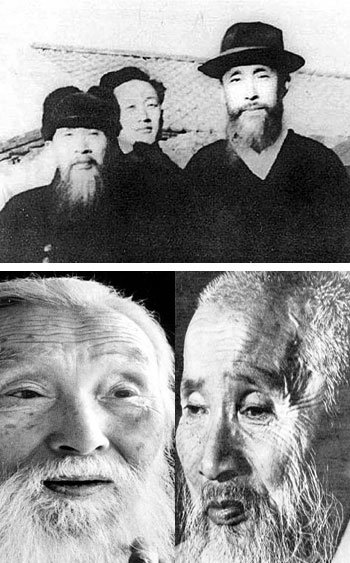Waiting

The Daseok Lecture is a book of shorthand lecture notes from a classics class given by Yoo Young-mo from October 17 1956 to September 13 1957. It was part of a 35-year Chinese classics lecture run by Yoo from 1928 to 1963 at the Seoul YMCA, called the Yeongyeong Class. Yoo succeeded Wolnam Lee Sang-jae in 1927.
Except for the Daseok Journal, which Yoo himself wrote, he did not write any other books. When he foresaw his own death, he ordered his students to compile the shorthand notes.
The notes, gleaned from a years worth of lecture notes, are considered to be an archive that reveals his inner thoughts. Yoo represents a Korean philosophy that internalized Christian philosophy into Korean philosophy. He interpreted the relationship between God and Jesus in terms of the Confucian Bujayuchin relationship, or affection between father and son, and the Doh, a Chinese character meaning way, as in the way to heaven.
In addition, Yoo considered Hangul, the Korean alphabet, as Gods revelation to the Korean people sent through King Sejong, and gave new meanings to Korean words. For example, he described God in Korean as the one being without being, saying that God transcended being and was not a being.
The Korean word ohneul, or today, was translated into Oh! Neul, which literally means Oh, forever, insinuating that that the present day lasts forever.
The philosophy of Ssimang, or people, which later became one of the best known philosophies of Hahm Seok-hun, is based on life and peace, which all originated from Yoo.
While Yoo is considered a philosopher, Hahm was the activist who carried that philosophy into society. When Hahm transferred to the Osan School as a senior, he met Yoo, who had become the new principal, and with his introduction, he met with Japans Ganzo Uchimura, who emphasized the internalization of Christian philosophy. Hahm was reborn as a Christian philosopher.
The book The Hahm Seok-hun I Saw talks about the night of December 14, 1955, 20,000 days after Hahm had been born. After having dumpling soup with his teacher Yoo, Hahm explained to his students the course of his life through a graph. The graph rises steadily in the shape of a parabola and drastically rises in 1921, when he met Yoo, and 1924 when he met Uchimura.
The author of the book, professor Kim Yong-joon, also experienced a sharp ascent in his lifes parabola. The rise began on a day in 1949 when he attended Hahms first lecture at the Seoul YMCA. In professor Kims eyes, Hahm was both a hopeless romanticist who would recite a poem, and also a true patriot who put his life at stake to oppose Rhee Seung-mans dictatorship and President Park Jung-hees military dictatorship, but never criticized Korea abroad.
Hahm is described as a waiting theologian that does everything he can and waits for a decision from heaven.
What is the theology of waiting? Hahm perceived the historical theme of the 5,000-year history of the Korean people as a history of hardship. In his view, Japanese colonial rule and the division of Korea were Koreas crown of thorns, and the work of God was still waiting to be done. That is why he asked the people of this land to: Learn to toil and wait through endless achievements and continuous pursuit.
Chae-Hyun Kwon confetti@donga.com
Headline News
- N. Korea launches cyberattacks on S. Korea's defense companies
- Major university hospital professors consider a day off each week
- Italy suffers from fiscal deficits from ‘Super Bonus’ scheme
- Inter Milan secures 20th Serie A title, surpassing AC Milan
- Ruling and opposition prioritize spending amid tax revenue shortfalls






